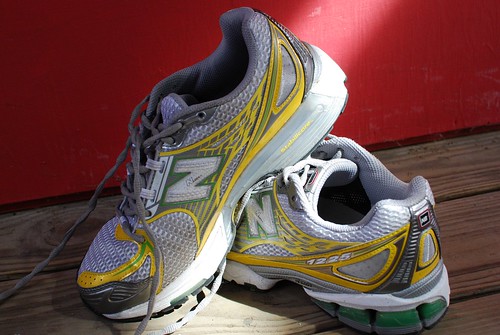Running a race can be intimidating but don’t let that keep you from signing up! Whether you’re training to run your first race or already have a few under your belt, here are my best tips to take you from packet pick up to celebrating at the finish line.
Pre-Race
Knowledge is power! Read through any brochures or emails that you get from the race. These usually have details about the race course, pre- and post-race logistics and activities, parking, etc. Familiarize yourself with the course, water stop locations and any special requirements, such as a course time limit.
Feed me! Nutrition is an important component leading up to your race. Repeat this phrase: No new things! Don’t add new foods or supplements to your diet. If you’re prone to tummy trouble, cutting down on fiber the week of the race may help.
Ouch, that chafes! The nutrition rule is the same for race gear: No new things! Race day is not the time to try a new pair of shoes or technical shirt.
The night before the race, lay out all race gear, put your timing chip on your shoe, fill out your race number and pin it onto your clothes, make sure your Garmin/iPod is charged, and lay out any gels/drinks you plan to take. Some other tips:
Even if the temperature is a little on the cold side, you’ll warm up quickly as you begin running. Plan your race apparel as though it’s 15-20 degrees warmer than what the actual temperature is.
If it’s chilly at the start, bring clothes that you can “throw away” in the first couple miles. Goodwill or other thrift stores are perfect for finding throw away gear. Hello, $1 sweatshirt. It doesn’t have to be pretty, just warm!
Pack a post-race sweats bag so you can change out of sweaty clothes or put on compression gear soon after you finish.
More cowbell! If friends and family are coming to watch you, make sure they know what your race pace is and what you’ll be wearing so they’re sure not to miss you. Make a plan of where to meet after the race is over.
Race Day
Eat! You’re probably a little nervous and not very hungry but try to choke down a few bites of whatever you typically have before a training run. If you can’t stomach any food, drink a sports drink.
Leave early! Depending on the size of the race and its location, arrive at least a half-hour early. Parking can be tough to find and navigating through the crowds at the start can take time.
Potty time! Most races have porta-potties at the start line and the lines will be long due to what I call nervous bladder/tummy. Get in line right away if you feel the need to go.
Move it! Do an active warm up to get your heart rate up. It will also help calm your nerves. Go for a slow jog, do some drills or strides and try to keep moving until it’s time to get into the start corral.
The Race
On your mark! In the start corral, line up according to pace. It’s not necessary to be at the front- unless you plan to win, of course! The energy and excitement from the race will have your adrenaline pumping but resist the urge to run faster than you planned.
Shhh! If you are wearing headphones, do not turn them up so loud that you can’t hear what’s happening around you. The first mile or two of a race can be especially crowded and it’s important that you can hear people coming up behind you or directions from the course volunteers.
Pace! In a perfect world, each mile would be at the same pace but it’s really difficult to do that. “Banking” time up front rarely works. It’s best to try to run negative splits, meaning you run the first half of the race slower than the second half.
Water! One of the most challenging parts of a race is learning to run through a water stop. At most races, volunteers will be handing you cups. The cups are typically half-full so you won’t spill all over yourself. If you plan to run and drink, squeeze the cup at the top to form a narrow opening and drink by sort of pouring the water into your mouth. If you plan to walk, move to the side of the course. Look around you before throwing your cup on the ground. No one likes wet feet!
Ideally you’ll know what your hydration needs are from your weeks of training. It’s important not to drink too little – or too much! Adjust your hydration strategy based on the weather, your pace, and how you’re feeling.
Keep moving! No matter how tired you are from leaving it all out on the course, do not stop and sit down! It might feel good at the time but when you try to move, it will be extremely painful! Walk slowly until your heart rate comes down and grab some water and post-race food. These things are usually available in the finish area but may not be at smaller races.
Stretch it out! Now that you’ve cooled down a little bit, stretch! Your muscles will still be warm from your run so do some static stretching. You also might want to change if you brought clothes to change into after the race.
Celebrate! Congratulations, you did it! Take a minute to appreciate the fact that no matter what time you finished in, you still beat everyone on the couch!
Now go look for your next race!
Hannah Schroeder blogs about running, family, and life at her blog Feet Move Forward. A Minneapolis local, she is the Communications Specialist for the Twin Cities Marathon and has a seriously large (virtual) cowbell.



